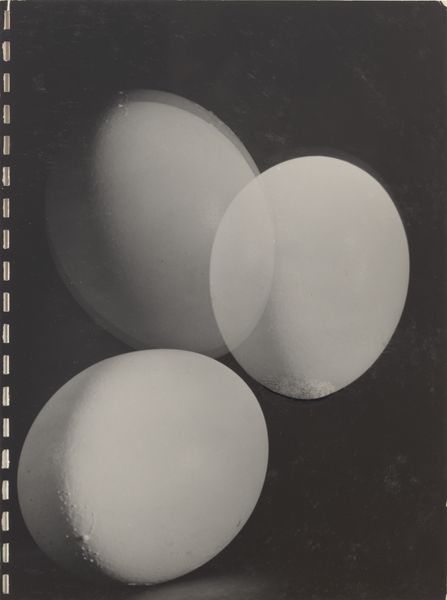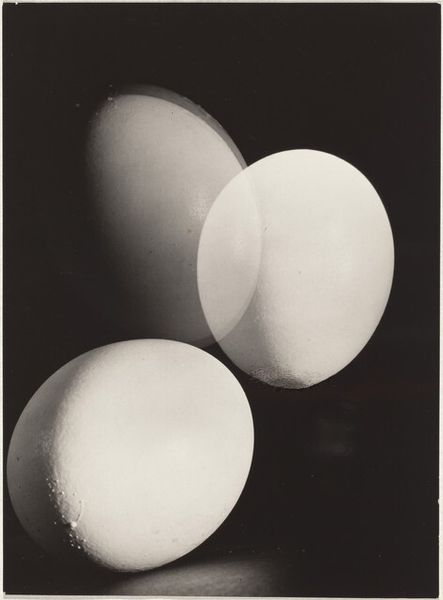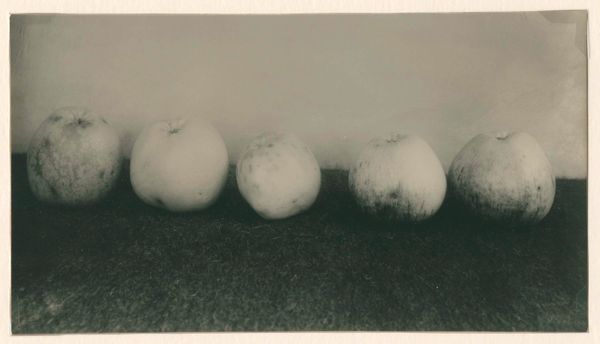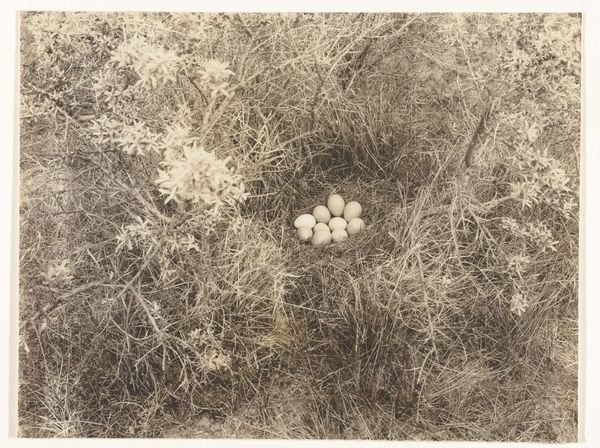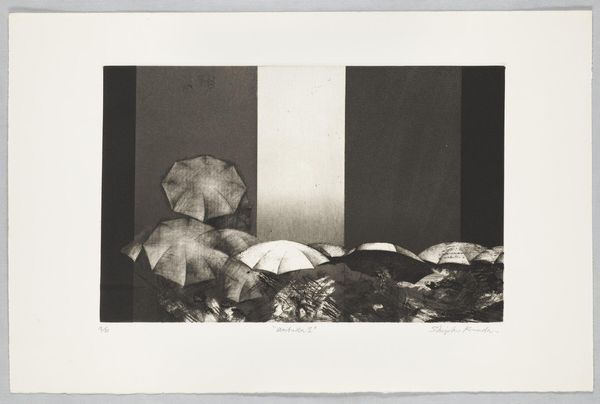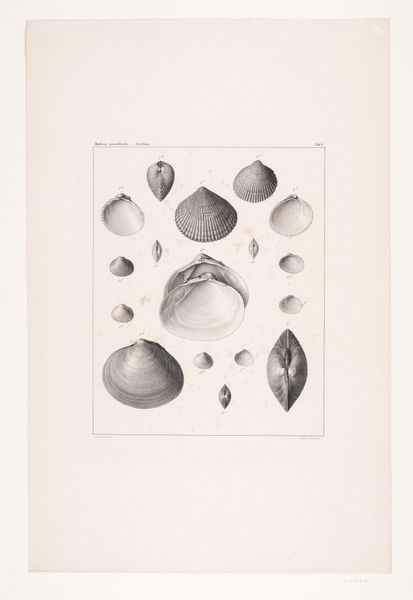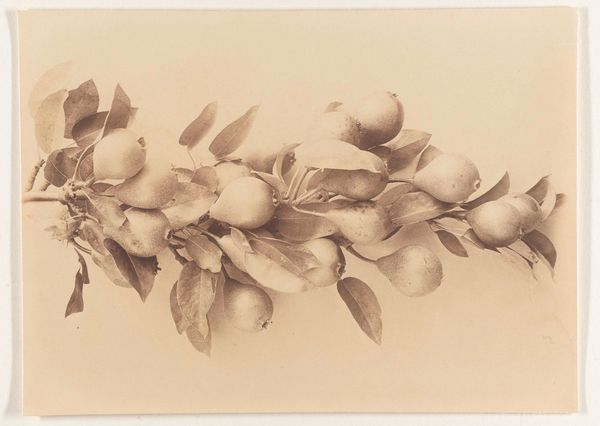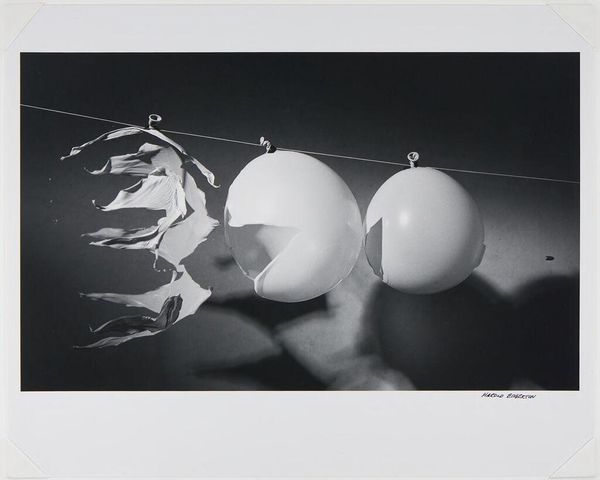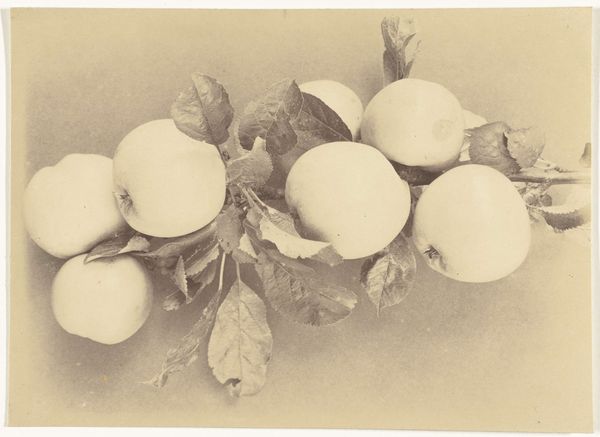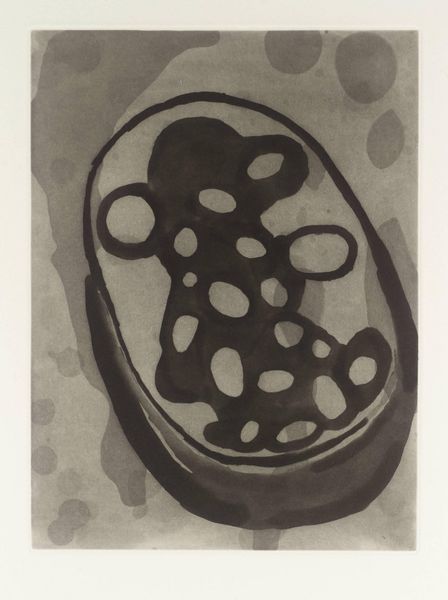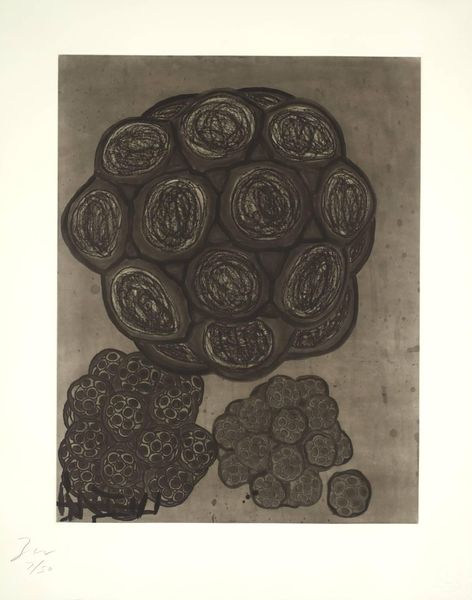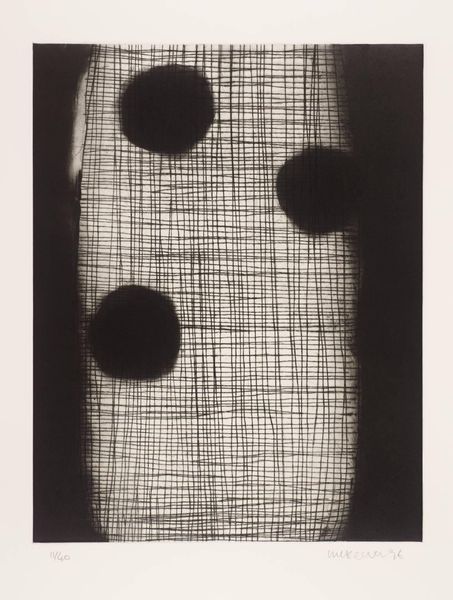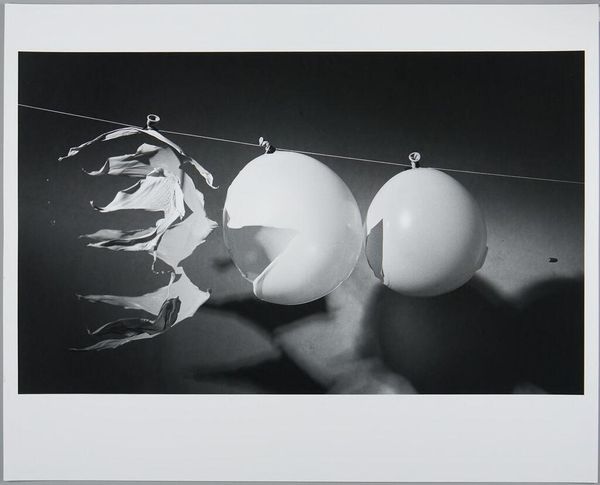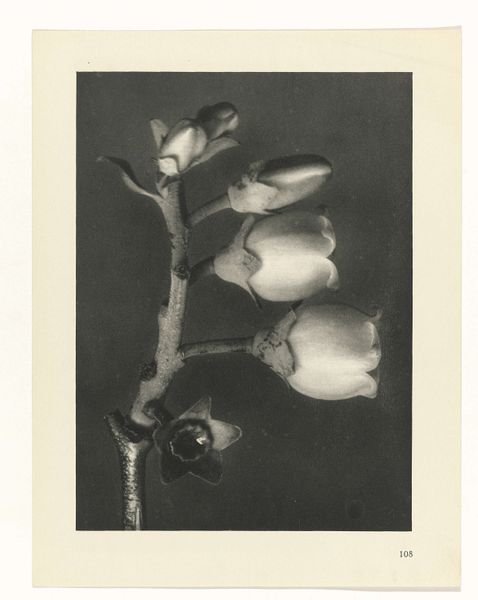
Dimensions: image: 223 x 165 mm
Copyright: CC-BY-NC-ND 4.0 DEED, Photo: Tate
Curator: This is Werner Mantz's "Title of WDR-radio programme, Cologne 1928", a photograph taken in 1928. What are your initial thoughts? Editor: It's deceptively simple, a study in ovals and light. It makes me think about abundance, perhaps even a comment on the role of women in the domestic sphere. Curator: Mantz was deeply involved in the "New Objectivity" movement. This photograph embodies the movement's ethos of capturing subjects with clarity and precision, removing sentimentality. Editor: True, but the choice of eggs is still potent. In 1920s Germany, eggs were a staple, but also a symbol—linked to ideas about fertility and the family, further complicated by post-war socio-political shifts. Curator: The image lacks overt symbolism, focusing more on the formal qualities of the objects themselves. It's a quiet observation, and it invites the viewer to bring their own cultural baggage to it. Editor: Yes, and that's precisely why it resonates. Its surface simplicity belies the underlying questions it raises about gendered labor and the construction of domesticity in Weimar Germany. Curator: It is amazing to reflect on how a seemingly simple composition of eggs can yield such diverse insights into the context of its time. Editor: Precisely, the quiet power of art to reflect and refract the world around it.
Comments
tate 7 months ago
⋮
http://www.tate.org.uk/art/artworks/mantz-title-of-wdr-radio-programme-cologne-1928-p79941
Join the conversation
Join millions of artists and users on Artera today and experience the ultimate creative platform.
tate 7 months ago
⋮
Title of WDR-radio programme, Cologne 1928, printed 1977 is a photograph by Werner Mantz. Taken from above, it shows a collection of eggs almost filling the frame, with just a small portion of their container visible in the bottom left-hand corner. The striking formal composition turns the everyday subject matter into an abstract motif. The sharp play of light and shadow outlines the silhouettes of the eggs, revealing details that would normally be neglected by the human eye, such as minuscule streaks and marks on the surfaces of the shells. The disordered layering of the eggs within the container adds a sense of depth to this otherwise flat, frontal depiction.
